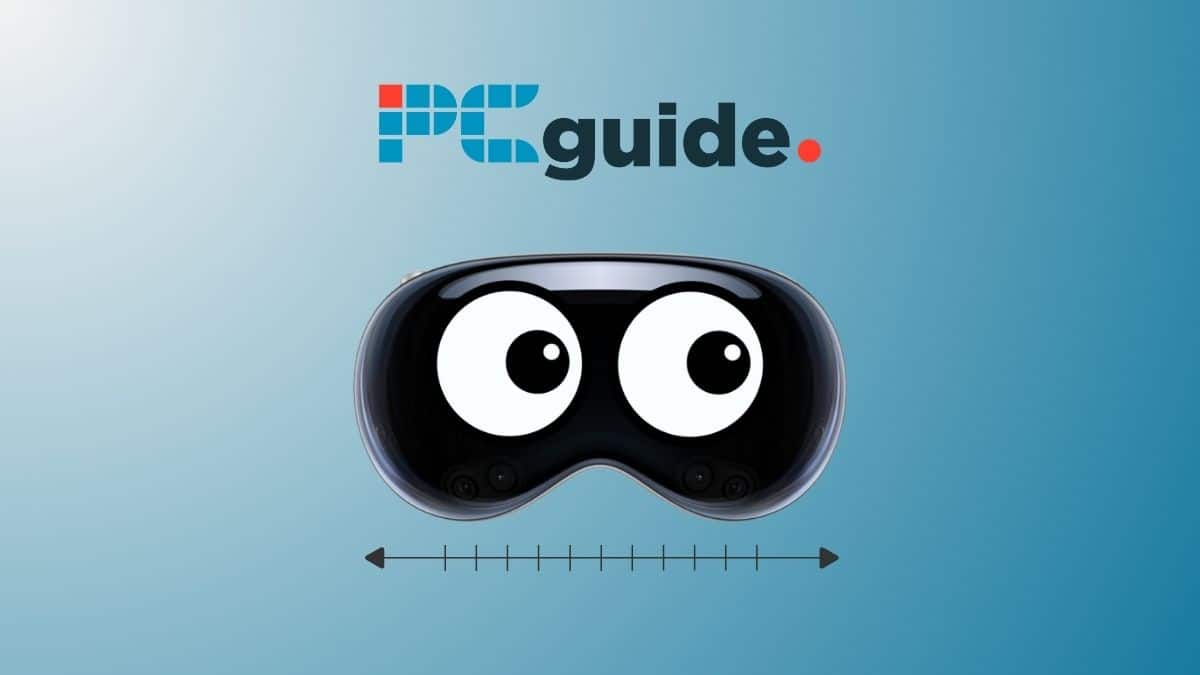What is the Apple Vision Pro FOV? Here’s what we know

Table of Contents
When it comes to immersive VR, a wider field of view means you can take in more of your digital environment – so, what’s the Apple Vision Pro’s FOV? The device launch is finally here, but the question of what the field of vision on Apple’s groundbreaking headset actually is remains relatively unanswered. Without a doubt, the world has been captivated by the spatial computing experience, so in this article, we’ll dive into all the essential details of what we know about the field of vision of the Apple Vision Pro, and how it compares to its mixed reality competitors.
Understanding the Field of View (FOV)
The field of view (FOV) refers to the extent of the visual scene that a person can perceive when wearing a VR headset. It determines how immersive and realistic the virtual experience will be. At the end of the day, increased FOV = increased immersion, and having a wide field of vision makes your media consumption feel even more realistic.
Prime Day is finally here! Find all the biggest tech and PC deals below.
- Sapphire 11348-03-20G Pulse AMD Radeon™ RX 9070 XT Was $779 Now $739
- AMD Ryzen 7 7800X3D 8-Core, 16-Thread Desktop Processor Was $449 Now $341
- ASUS RTX™ 5060 OC Edition Graphics Card Was $379 Now $339
- LG 77-Inch Class OLED evo AI 4K C5 Series Smart TV Was $3,696 Now $2,796
- Intel® Core™ i7-14700K New Gaming Desktop Was $320.99 Now $274
- Lexar 2TB NM1090 w/HeatSink SSD PCIe Gen5x4 NVMe M.2 Was $281.97 Now $214.98
- Apple Watch Series 10 GPS + Cellular 42mm case Smartwatch Was $499.99 Now $379.99
- ASUS ROG Strix G16 (2025) 16" FHD, RTX 5060 gaming laptop Was $1,499.99 Now $1,274.99
- Apple iPad mini (A17 Pro): Apple Intelligence Was $499.99 Now $379.99
*Prices and savings subject to change. Click through to get the current prices.
What’s the FOV on the Apple Vision Pro?
Well, the thing is, there are no confirmed figures on the Vision Pro’s FOV as it was withheld from the list of tech specs. However, based on the specs of other VR headsets and what we can garner from the recently released reviews, it’s easy to narrow down some estimated figures. According to The Verge’s review, “the Vision Pro's field of view is certainly smaller than the Quest 3's 110 horizontal degrees”, a notion also picked up by CNET’s Scott Stein, who says the FOV “feels a bit smaller than the Meta Quest 3”. So, while nothing is confirmed by Apple, it could be said that the FOV of the Vision Pro might be roundabout 100 degrees, give or take.
Though the reviews compared their experiences to wearing binoculars or a scuba mask, there weren’t any outright negative comments on the FOV, so hopefully the vision of the Vision won’t be an issue. Fueled by powerful hardware in the form of the M1 and R1 chip, the FOV might not be astounding on the Vision Pro, but the spatial computing experience is certainly like nothing available on other VR headsets. In addition to an impressive, although imperfect, video passthrough render, the device boasts an impressive display with 23 million pixels and a 3D display system. It utilizes micro-OLED technology with a 7.5‑micron pixel pitch, resulting in undeniably stunning visuals.
- Apple Vision Pro – approx. 100 degrees
- Sony PlayStation VR 2 FOV – 110 degrees
- Meta Quest 3 FOV – 110 degrees
- Meta Quest Pro FOV – 106 degrees
What's the impact of FOV on the VR experience?
The FOV plays a crucial role in shaping the overall VR experience. A wider FOV allows users to perceive a broader range of the virtual world, making the experience feel more natural and immersive. It eliminates the feeling of looking through a narrow window, enhancing the sense of presence within the virtual environment.
On the other hand, a limited FOV can result in a more restricted experience, making users feel like they’re peering through a tunnel. It may lead to a less immersive and engaging VR experience. For example, it was commented that the Vision Pro felt similar to wearing scuba goggles or binoculars due to its frame shape, giving it that first-generation device feel.
What camera and sensors does the Vision Pro come with?
The Vision Pro features a stereoscopic 3D main camera system for spatial photo and video capture. It offers an 18 mm aperture and captures images at 6.5 stereo megapixels. Additionally, the headset is equipped with multiple high-resolution main cameras, world‑facing tracking cameras, eye‑tracking cameras, a LiDAR Scanner, and various other sensors. These sensors work in harmony to track movements, capture depth information, and provide a highly interactive VR experience: a core element of the Vision Pro are the eye-tracking sensors that allow you to navigate Vision OS simply by looking at things.
Conclusion
From its announcement at WWDC to now, there hasn’t been an official figure put on the Vision Pro’s FOV, a critical factor in determining the immersion and realism of a VR headset. As previously mentioned, while there are no official stats from Apple, it can be estimated that the Vision Pro’s FOV spans between 100 and 110 degrees, keeping it on par with other leading VR headsets in the market.
In addition to its FOV, the Apple Vision Pro offers a range of cutting-edge features, including an exceptional display, powerful performance, advanced camera and sensor technology, immersive audio, and accessibility options that set it apart from the crowd as a really unique mixed-reality platform. There’s also the other massive advantage over its competitors, and that’s its integration within the Apple ecosystem.

